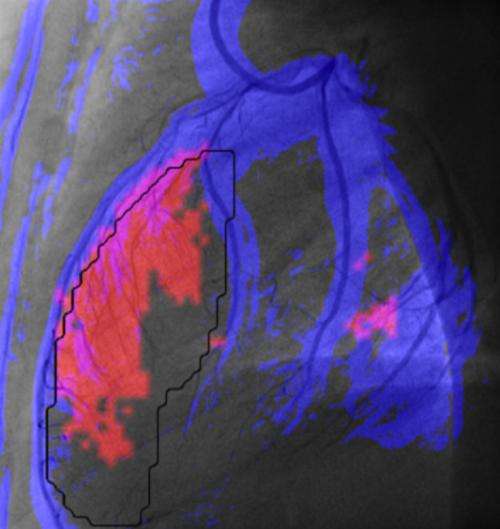Design of a new tool to improve and speed up diagnosis of heart damage after a heart attack

Researchers from the Computer Vision Center (CVC) have developed a new tool to quantify the myocardial perfusion damage in people who had a heart attack or an angina. Having been validated in 200 patients, it can help improve and speed up diagnosis of the damage, offering a quantitative, repeatable and objective measure of the blood irrigation level of the heart tissue.
Cardiovascular diseases are the most frequent cause of death in our country. Ischemic heart diseases, especially acute myocardial infarctions stand out as they have a very high morbidity. In these cases, the best treatment is the primary angioplasty that restores normal coronary flow. Nonetheless it has been shown that even in successful cases; the patient's disease has higher probability of reappearing in cases in which myocardial irrigation has also affected the smaller blood vessels. Thus, sometimes the physician requests a second diagnostic test to the patient –usually a magnetic resonance image (MRI)– a few weeks after surgery in order to prescribe the proper medicines, if necessary.
During the last four years, researchers Carlo Gatta (CVC) and Simone Balocco (researcher from the Universitat de Barcelona in the CVC), together with Dr. Xavier Carrillo (Hospital Universitari Germans Trias i Pujol, associated to the UAB) have developed a new tool using computer vision, called X-QPA (Quantitative Myocardial Perfusion Analysis), which can quantify the damage to myocardial tissue before, during or after surgery.
The developed software allows, through the analysis of images, to have a quantitative, repeatable and more objective measure of myocardial irrigation, identifying regions with less blood irrigation. It also helps compare in a fast way the state of two arteries or that of the patient before and after surgery.
Researchers believe that the new tool can help physicians to improve diagnosis of heart damage, and contribute to reducing mortality due to chronic heart failure diseases. The X-QPA can also be of help in testing new treatments for ischemic heart diseases. The use of this software is also an alternative to MRI, with the resulting savings in costs and time.
A prototype of the X-QPA has been built and already validated in 200 patients thanks to the economic funding of ACCIÓ. A patent at European level has also been requested. The next step is trying to commercialize the new technique through a medical company.















